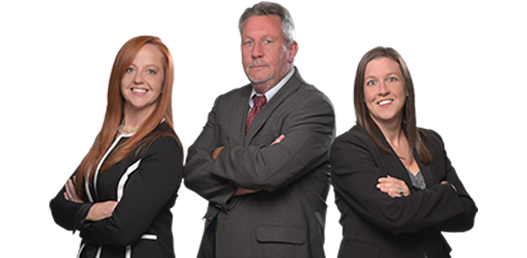Bankruptcy FAQ
What Happens In a Chapter 13 Bankruptcy Proceeding?
A Chapter 13 proceeding, often called a wage-earner plan, is initiated by filing a petition in federal bankruptcy court. Along with the petition the debtor files various schedules detailing assets, liabilities, income and other receipts, expenses, executory contracts, leases, education accounts and other relevant financial information. The debtor must also file proof of required credit counseling, or of accepted exigent circumstances like military service or disability that would prevent such counseling.
After filing the petition, a trustee is appointed to manage the case.
As in a Chapter 7 case, the filing of the Chapter 13 petition automatically stays (stops) creditors from trying to collect on most of the petitioner’s debts. A special automatic-stay provision in Chapter 13 protects co-debtors. A creditor generally may not seek to collect a consumer debt (those for a “personal, family, or household purpose”) from any individual who is liable along with the debtor.
Upon filing or within 14 days, the debtor must file a plan that sets forth the details of how he or she proposes to pay off creditors in the next three to five years. The time period allowed for repayment of debt will depend on the debtor’s and his or her spouse’s incomes in relation to the median income in their state for same-size households.
The plan must provide for fixed payments to the trustee on a regular basis and will be submitted to the court for approval. If approved, the trustee will distribute funds to the creditors according to the plan’s terms. Within 30 days of filing, the debtor must start making payments under the plan to the trustee, even if the court has not yet approved the plan.
Within 20 to 50 days after the debtor files the petition, the trustee holds a meeting of creditors. The debtor must attend this meeting and answer questions regarding financial issues and the proposed plan terms.
The judge must hold a confirmation hearing within 20 to 45 days of the meeting of creditors, at which time he or she will decide whether the plan is feasible and meets the Bankruptcy Code’s standards for confirmation. Creditors may ask questions about and object to the plan. If the court approves the plan, however, the creditors can take no action outside the plan’s scope to collect their debts.
There are three types of claims:
- Priority claims. Priority claims include most taxes and the costs of the bankruptcy proceedings.
- Secured claims. Secured claims are those for which the creditor has the right of recovering specific property (collateral) if the debtor does not pay.
- Unsecured claims. Unsecured claims are claims for which the creditor generally has no special rights to collect against any property the debtor owns.
The plan must pay priority claims in full, unless a priority creditor agrees otherwise. Some terms of secured debts may be modified by the Chapter 13 plan, but the secured creditor must not receive less than the value of the collateral property. Unsecured claims do not need to be paid in full as long as the plan provides that the debtor will pay all “disposable income” and as long as unsecured creditors would receive at least as much under the plan as they would if the debtor’s assets were being liquidated under Chapter 7.
Once the debtor completes all payments under the plan, the debtor is entitled to a discharge, which normally releases him or her from all debts “provided for” or disallowed under the plan. Some types of debt are not extinguishable in Chapter 13, including broadly:
- Some debts incurred after the petition was filed
- Some long-term debts like mortgages
- Many taxes
- Debts incurred through fraud, many crimes or violation of fiduciary duty
- Debts incurred because of drunk driving
- Most student loans
To obtain the discharge, the debtor must also (1) certify that all domestic support obligations have been satisfied (if applicable); (2) complete an approved financial management course; and (3) have not received a discharge within two years in a prior Chapter 13 case or within four years in a prior case under Chapters 7, 11 or 12.
The Bankruptcy Code also provides for a limited hardship discharge even if the debtor did not complete the plan if certain circumstances occur, including uncontrollable difficulty like catastrophic illness.
Bankruptcy lawyers can help consumers struggling with increasing and inescapable debt find their way to a better financial future. Contact our firm today to schedule an appointment with a bankruptcy attorney.
Copyright © 2011 FindLaw, a Thomson Reuters business
DISCLAIMER: This site and any information contained herein are intended for informational purposes only and should not be construed as legal advice. Seek competent counsel for advice on any legal matter.
Office location
Gregory C. Starkey, Attorney at Law
2016 10th Ave South, Suite 101 Birmingham, AL 35205
See Map and Directions to our office

